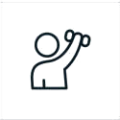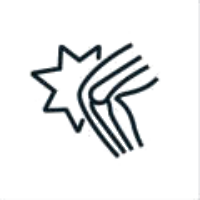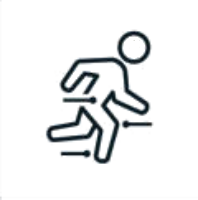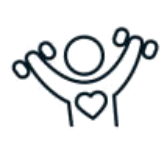Sports Injury Physiotherapy in Goregaon, Mumbai
Get The Best Sports Physiotherapist in Mumbai For Sports Injury
Dealing with a sports injury can be frustrating and disruptive to your active lifestyle. Whether it’s a minor strain or a more complex injury, seeking professional care early can make all the difference in your recovery process. At Physio Lounge, we understand the concerns that come with sports injuries—whether it’s managing pain, restoring mobility, or preventing future damage. Our team of expert sports physiotherapists in Mumbai is dedicated to providing personalized, evidence-based treatment plans tailored to your specific injury and athletic goals. With state-of-the-art facilities, advanced rehabilitation techniques, and a focus on long-term recovery, we’re here to help you bounce back stronger, faster, and more confident. Choose Physio Lounge for expert care that combines expert knowledge, cutting-edge technology, and compassionate support—because your health and performance matter to us.
Benefits of Sports Injury Treatment

Strengthen muscles and joints

Reduce pain and inflammation

Improve range of motion

Get back to your sport faster
What is Sports Physiotherapy?
Sports physiotherapy is a specialized branch of physiotherapy focused on preventing, diagnosing, and treating sports-related injuries. It helps athletes recover, improve performance, and reduce the risk of future injuries through tailored exercise programs, manual therapy, and education.
Role of a Sports Physiotherapist
A Sports Physiotherapist is a specialized healthcare professional trained to assess, diagnose, and treat injuries related to physical activity, exercise, and sports. They play a crucial role in helping athletes, fitness enthusiasts, and individuals recover from injuries, improve their physical performance, and prevent future problems.
Injury Prevention: Develops strategies to avoid injuries during training or competition.
Injury Diagnosis: Assesses and identifies the type and severity of sports injuries.
Rehabilitation: Creates personalized recovery plans to restore function and mobility.
Pain Management: Uses techniques like massage, stretching, and modalities to relieve pain.
Performance Enhancement: Improves strength, flexibility, and endurance to boost athletic performance.
Education and Guidance: Provides advice on proper techniques, posture, and equipment use.
Support During Events: Offers on-field assistance to manage injuries promptly.
Chronic Injury Care: Helps athletes manage recurring or long-term injuries effectively.
Sports physiotherapists in Goregaon, Mumbai play a vital role in keeping athletes healthy, active, and at their best.
Injuries That a Sports
Physiotherapist Can Help With:
Our Sports physiotherapists in Mumbai are trained to manage a wide range of injuries that commonly occur during physical activities, sports, and exercise. Some of the injuries they can help with include:
Muscle Strains: Tears or overstretching of muscles caused by excessive physical exertion or poor technique.
Ligament Sprains: Injuries to the ligaments (the tough bands of tissue that connect bones to each other), often occurring in joints like the ankle, knee, or wrist.
Joint Dislocations: When bones move out of their normal position within a joint, leading to pain, swelling, and instability.
Tendonitis: Inflammation of the tendons, usually caused by repetitive movements or overuse, leading to pain and stiffness.
Stress Fractures: Tiny cracks in bones resulting from overuse, commonly occurring in weight-bearing bones like the shin or foot.
Overuse Injuries: Injuries that develop over time due to repetitive strain, such as runner’s knee, swimmer’s shoulder, or shin splints.
Concussions: Brain injuries caused by impact or trauma to the head during contact sports or accidents.
Back and Neck Pain: Issues related to poor posture, improper lifting, or repetitive movements that cause discomfort or stiffness in the spine.
Muscle Imbalances: Weakness or tightness in specific muscle groups that can lead to poor movement patterns and increased injury risk.
By addressing these injuries with specialized techniques, personalized treatment plans, and rehabilitation programs, sports physiotherapists help individuals recover quickly and safely, getting them back to performing at their best.
Key Exercises Included in Sports Therapy Physical
1. Warm-Up Exercises:
Light physical activities such as slow jogging, arm circles, or dynamic stretches that gently increase heart rate and blood flow to muscles. These help prepare the body for more intense movements by gradually loosening muscles and joints.
2. Flexibility Exercises
Stretches targeting specific muscle groups like hamstrings, quads, calves, and shoulders. These include static stretches where you hold a position to improve joint flexibility and mobility, helping to reduce stiffness and prevent injury.
3. Strengthening Exercises:
Resistance-based workouts using weights, resistance bands, or bodyweight. Exercises like squats, lunges, push-ups, and shoulder presses are included to build muscle strength in targeted areas affected by the injury.
4. Core Stability Exercises:
Focuses on strengthening the muscles around the abdomen, back, and pelvis. These include exercises like planks, bridges, and stability ball exercises that improve core balance and prevent overcompensation from other body parts.
5. Balance and Coordination Exercises
Exercises designed to enhance stability and coordination, such as single-leg stands, balance board activities, or stability ball exercises. These improve the body’s ability to maintain control during movement and prevent falls.
6. Proprioception Training
Activities that improve body awareness and control, like step-ups on an unstable surface, agility drills, or using balance pads. These exercises help athletes regain proper joint alignment and movement patterns.
8. Sport-Specific Training
Mimics movements from the athlete’s sport to help ease the return to physical activity. This could include light jogging, dribbling, or shadow practice that gradually prepares the body for sport-specific actions.
9. Low-Impact Aerobics
Light cardiovascular activities such as cycling, swimming, or elliptical training. These exercises help maintain cardiovascular fitness without putting excess strain on the injured area.
10. Cool-Down Exercises
Slow movements like gentle stretching and breathing exercises that help muscles relax, improve circulation, and aid recovery after the main therapy session.
By addressing these injuries with specialized techniques, personalized treatment plans, and rehabilitation programs, sports physiotherapists help individuals recover quickly and safely, getting them back to performing at their best.
How to Deal With Sports Injuries?
The impact of an injury can be hard on an athlete, especially when it affects their game. There are both mental and physical aspects at play during the recovery period and can add due to stress and anxiety. The player needs to keep a few things in mind while dealing with the injury.
These few points can prove to be a great coping mechanism for the sportsperson:
Being Aware of Sports Injury
Being aware of the reason, treatment, and prevention of the injury can help lessen the fear or anxiety to a large extent. One must feel free to ask their doctor, trainer, coach, or therapist about what can be done to heal quickly and fully.
Being updated about the diagnosis, the type of injury, treatment options, and their purpose and recovery period can help the patient be abreast with their progress.
Alternative workouts and any warning signs to look out for can also be discussed with the doctor. One must feel free to seek a second opinion if they feel so and especially if surgery is recommended.
Taking Responsibility for Sports Injury
Acceptance and positivity is the key to recovery. The sportsperson instead of focusing on their decreased performance should accept that they have an injury.
This helps one to make a commitment towards their recovery which can result in a positive outcome and instill a sense of confidence in the player.
Commitment to Sports Injury Treatment
A fair amount of motivation and hard work to get back in the game helps one to get back in the game rather than getting discouraged and slacking off on therapy.
The player must be committed to overcoming their injury by showing up for their treatments and listening to the doctor or the trainer.
One must focus on what needs to be done rather than what one is missing out on.
Getting Help for a Sports Injury
The right kind of support can be a big factor in healing and recovery. The sportsmen who tend to isolate themselves from teammates and friends due to injury most of the time end up getting demotivated and their recovery lags. Good advice or encouragement during the rehab process can be a big boon.
Appropriate Goals on Sports Injury
True to the sportsman spirit, a player should turn injury into another training challenge, rather than viewing it as a crisis. The goals must be focused on recovery rather than performance as it will work as a motivation.
Direct/Contact Injury
A direct injury is caused by an external blow or force (extrinsic causes)
- A collision with another person e.g, during a tackle in rugby or football
- Being struck by an object e.g. a basketball or hockey stick
Indirect/Non-Contact Injury
An indirect injury can occur in two ways (intrinsic causes):
- The actual injury can occur some distance from the impact site e.g. falling on an outstretched hand can result in a dislocated shoulder.
- The injury does not result from physical contact with an object or person, but from internal forces built up by the actions of the performer, such as injuries that may be caused by over-stretching, poor technique, fatigue, and lack of fitness. (e.g. muscle strain or ligament sprain).
Treatment Procedure for Sports Injury Physiotherapy
Sports injury physiotherapy is designed for athletes and active individuals looking to recover quickly and safely from injuries while improving their overall performance. Whether you’re a professional athlete or someone who enjoys recreational sports, this treatment helps restore mobility, manage pain, and prevent future injuries through a structured and personalized approach.
- Initial Assessment: Involves evaluating the injury through a physical examination and reviewing the athlete’s medical history to identify the severity and cause.
- Pain Management: Includes techniques like ice/heat therapy, massage, and electrical stimulation to reduce pain and inflammation.
- Restoration of Mobility: Focuses on gentle stretching and exercises to improve joint movement and muscle flexibility.
- Strengthening Exercises: Targets rebuilding strength in injured areas while improving balance and stability.
- Manual Therapy: Uses hands-on techniques such as mobilization and massage to ease stiffness and enhance circulation.
- Functional Training: Involves sport-specific exercises to gradually prepare the body for returning to regular activities and movements.
- Education and Injury Prevention: Provides guidance on proper techniques, posture, and warm-ups to reduce the risk of reinjury.
- Follow-Up and Monitoring: Tracks recovery progress with regular check-ins and adjusts the treatment plan as needed.
This step-by-step procedure ensures effective recovery and long-term health for athletes.
Frequently Asked Questions
What is a sports physiotherapist?
A sports physiotherapist is a healthcare professional who specializes in preventing, diagnosing, and treating injuries related to sports and physical activities. They focus on helping athletes recover quickly, improve performance, and avoid future injuries through personalized rehabilitation programs.
What types of injuries can a sports physiotherapist treat?
A sports physiotherapist can treat a wide range of injuries, including muscle strains, ligament sprains, joint injuries, tendonitis, stress fractures, and overuse injuries. They also address post-surgical rehabilitation and chronic pain.
How can I benefit from seeing a sports physiotherapist?
Seeing a sports physiotherapist can help you recover faster from injuries, reduce pain, restore mobility, improve your physical performance, and prevent future injuries through personalized treatment plans.
What can I expect during my first visit to a sports physiotherapist at Physio Lounge?
During your first visit, the physiotherapist will conduct a thorough assessment of your injury, perform physical tests, review your medical history, and discuss your goals for recovery. They will then develop a personalized treatment plan.
How long does sports physiotherapy treatment usually last?
The duration of treatment varies depending on the type and severity of the injury. Some injuries may require a few sessions, while others might need ongoing care. The physiotherapist will provide an estimated treatment plan during your first consultation.
What treatments does a sports physiotherapist in Mumbai at Physio Lounge offer?
At Physio Lounge, sports physiotherapists offer treatments such as manual therapy, dry needling, taping, ultrasound, electrical stimulation, specific exercises, and sport-specific drills tailored to your recovery needs.
Can I continue my regular physical activities while receiving physiotherapy?
It depends on the severity of your injury. Your sports physiotherapist will guide you on which activities are safe to continue and how to modify your exercises to ensure safe recovery.
Is sports physiotherapy covered by insurance?
Sports physiotherapy may be covered by health insurance, depending on your policy. It’s recommended to check with your insurance provider to confirm coverage details.
How often should I attend physiotherapy sessions at Physio Lounge?
The frequency of sessions depends on your injury and treatment plan. Initially, you may need to visit 2-3 times a week, but this can be adjusted based on your progress.
What should I bring to my first physiotherapy session?
It’s helpful to bring your ID, insurance details (if applicable), any previous medical records, imaging results (such as X-rays or MRIs), and comfortable clothing for physical activity.
Can sports physiotherapy help with performance enhancement?
Yes, sports physiotherapy can help improve athletic performance by optimizing strength, flexibility, endurance, and overall physical function, helping you achieve your sports goals safely.
